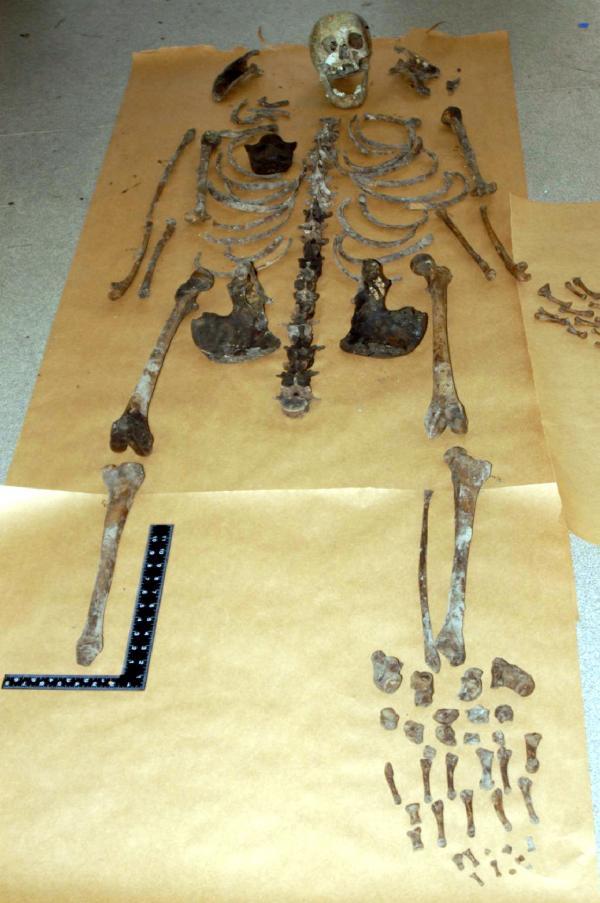What were remains of 1,000-year-old African skeleton doing in England?
HISTORIANS have given their theories of how a young African woman came to be found in a Fairford river, 1,000 years after her death. Fairford schoolboys Christian Thompson and Robbie Cribley made the discovery in June as they stumbled across a human skull while paddling their dinghy down the River Coln.
Instantly finding themselves the centre of international media attention, it was as the boys were being filmed by a crew from the BBC that they stumbled upon the rest of the woman’s remains.
Since then, nearly the entire skeleton has been recovered, except for the small bones of the hands and feet which are likely to have disintegrated. Forensic anthropologists say that the skeleton was a Sub-Saharan African woman, aged 18-24 and died between 896AD and 1025AD.

But quite how a southern African woman came to be in Fairford during the Anglo-Saxon period has baffled residents and historians alike but has led to a number of theories.
Syd Flatman, from West End Gardens in Fairford is a member of the Fairford History Society. He suspects the woman came to Fairford from London rather than all the way from Africa.
“All port cities were very cosmopolitan back then,” he said. “The lady in question would have had some command of the local dialect to survive so I would imagine she probably came to Fairford from London.”
Travel at the time, 1,000 years ago, was mainly via the River Thames at Lechlade and with no locks to contend with, residents had swift access to London.
He also doubts any suggestion that the young woman drowned in the river, but instead was buried close to it and became uncovered due to erosion in the following 1,000 years.
“My parents lay in the Roman Catholic cemetery a few yards from where the African woman was found and their grave was dug into gravel, barely five foot deep,” Syd continued.
“Their coffins, when lowered, were submerged in water even at that depth so I would assume the river bank has eroded over the millennia and exposed the body.”
Stuart Moaby, also from Fairford, suspects the woman could have been a slave during her time in Fairford: “She could have very easily been a slave if the bones show signs of any manual labour.
People still travelled great distances even in those days and there were routes trading in all sorts of commodities, including slaves.”
The forensic anthropologist reported no signs of violence or trauma to the bones, which Mr Moaby said suggested that the woman’s death was not violent but had been because of disease or accident.
The mystery of why the young woman’s final resting place was so far from where she was born and how she met her end is almost certainly never going to be solved. But it is sure to enthral residents in the town’s for some time to come.